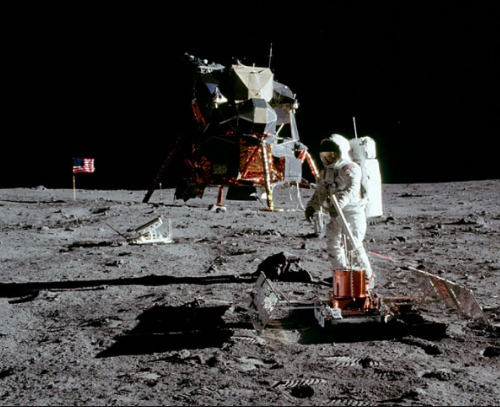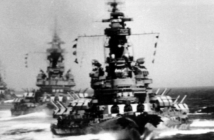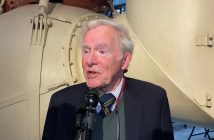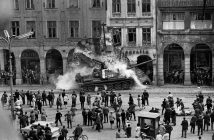July 20, 2019, marks the 50th anniversary of the first moon landing in human history. The crew was commanded by Neil Armstrong, a NASA civilian, and two active-duty US Air Force colonels, Lunar Module Pilot Buzz Aldrin and Command Module Pilot Michael Collins. The three lifted off aboard a Saturn V rocket from Launch Pad 39A at the Kennedy Space Center on July 16, 1969. Nearly 500,000 Americans worked on the project to fulfill President John F. Kennedy’s goal of landing a man on the moon and returning them safely to the earth in his “Urgent National Needs” address to the US Congress eight years earlier.
Neil Armstrong was the first man to walk on the moon and coined of one of the most famous quotes in modern history, “one small step for man, one great leap for mankind.” He began his military service in 1949 in the Korean War as a US Navy fighter pilot, flying an F9F Panther on 78 combat missions before leaving uniform in 1952. Armstrong worked for the National Advisory Committee for Aeronautics — which became the National Aeronautics and Space Administration in 1958, including as a test pilot of the X-15 rocket plane that could reach 4,000 mph. On May 6, 1968, serving as the backup commander for Apollo 9, Armstrong took his 22nd test flight aboard the Lunar Landing Research Vehicle #1 (LLRV-1) at Ellington Air Force Base near the Manned Spacecraft Center in Houston when he lost control of the vehicle. With 200 feet and less than a second to spare, he ejected as the test vehicle exploded on impact.
Edwin Eugene “Buzz” Aldrin, Jr, one of three astronauts on the Apollo 11 mission and the second man to step on the moon, earned his iconic nickname due to his sisters mispronunciation of “brother” as “buzzer.” Buzz entered the US Air Force in 1951 after graduating from the US Military Academy at West Point, NY, and as a member of the 51st Fighter Wing flew an F-86 Sabre on 66 missions in Korea shooting down two MiGs and earning a Distinguished Flying Cross.
Michael Collins, a distinguished test pilot, is less well known than his crew mates. As Armstrong descended in to the moon aboard the Eagle lunar lander, Collins orbited above the moon surface in command module Columbia. Every orbit, he faced 48 minutes of silence, out of contact with ground control, and while it has been said that “not since Adam has any human known such solitude,” Collins said he never felt lonely.




